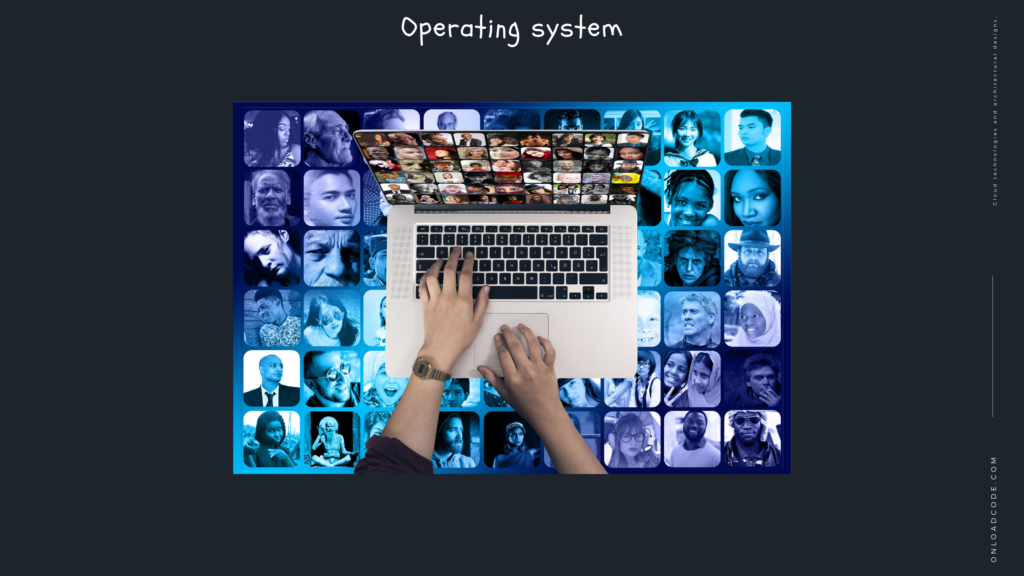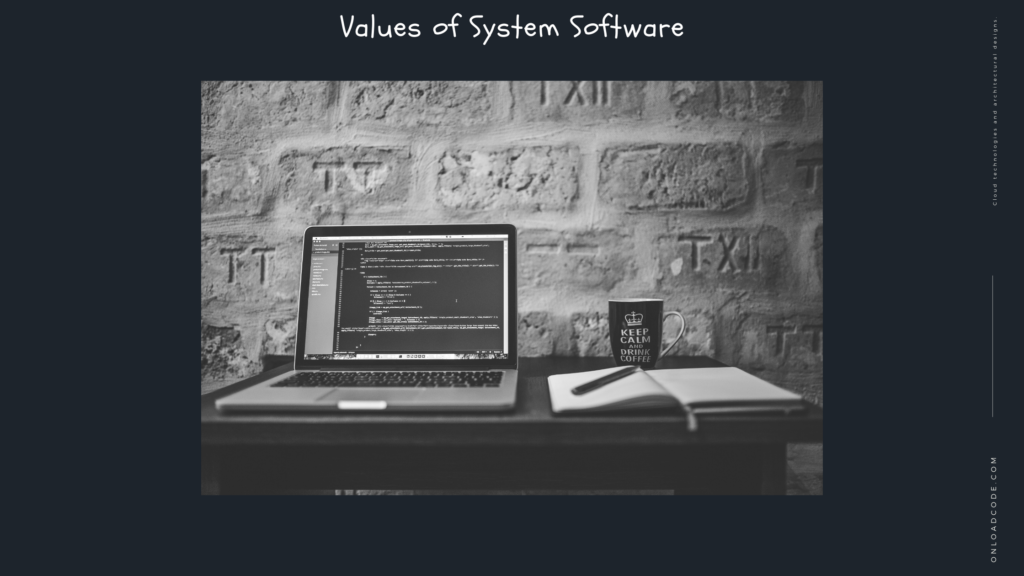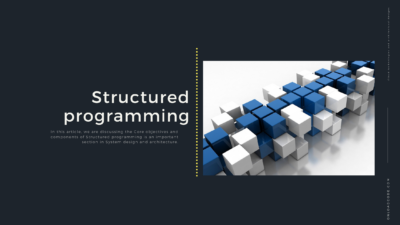This is the third article on the System Design and Software Architecture series. In this article, we discuss the Values of system software as an essential component in System design and architecture.
Previous articles
What is System software?

The system software is one of the significant components in System design and architecture. Software systems are large and complex, often containing hundreds of source code. For software systems, patterns could learn from behavioral particles, available specifications, knowledge of specialized experts, and other sources. Software templates testing and template testing Software templates help. Model conjecture strategies extract the structural and design information of a software system and present it as a formal model.
All computers run as system software or operating system. This program provides basic instructions on how the computer interacts with the user and how various programs and packages work.
System software types
Here are the essential types of system software:
- Operating Systems: – Operating system software helps you use all the hardware and software components of a computer system effectively.
- Programming translators: – Translates instructions developed by programming language developers into a computer system that could interpret or compile.
- Communication software: – Communication software allows the transfer of data and programs from one computer system to another.
- Utility Programs: – Utility programs are a set of programs that help users to perform system maintenance tasks and perform regular tasks.
Operating system

An operating system (OS) is one of the system software that can manage the hardware and software resources of a computer. It provides general services for computer programs. An operating system activates a connection between software and hardware. It controls a report on the execution of all other programs on the computer, including application programs and other system software.
These are the most critical functions performed by the operating system
- Memory Management: The operating system monitors the primary memory and allocates memory when a process requires it.
- Processor Management: Allocates main memory (RAM) to a process when it is no longer needed.
- File Management: Allocating resources and determining who gets the resources.
- Security: Passwords prevent unauthorized access to programs and data.
- Troubleshooting aids: Produce dumps, clues, error messages, and other debugging and debugging methods.
- Scheduling: The scheduling process of the operating system is done through its scheduling algorithm.
Device drivers
Driver software is system software that brings computer devices and terminals to life. All connected components and external add-ons perform the desired functions, and they are operated by the operating system. Without drivers, the operating system does not perform any tasks.
By default, their drivers installed input devices such as mouse and keyboard. They will never need third party installations.
If the device is newer than the operating system, also the user will need to download drivers from manufacturer websites or alternative sources.
Firmware
Firmware is a piece of operating system software and embedded in a flash, ROM, or EPROM memory chip that detects the operating system. It directly manages all the functions of any individual hardware.
Traditionally, the firmware is the word for permanent software. It is installing on nonvolatile chips, and it can only upgrade by replacing them with new pre-programmed chips.
This is done to distinguish them from a high level of software. It can update without exchanging components.
Today, the firmware is storing on flash chips and can be updated without replacing semiconductor chips.
Programming Language Translators
These are intermediate programs that software programmers rely on to translate high-level language source code into machine language code. The first is a collection of programming languages that are easy for people to understand and encode (i.e., Java, C ++, Python, PHP, Basic). The second is a complex code that can only understand by the processor.
Popular translator languages are compilers, assemblers, and translators. They are usually designed by computer manufacturers. Converter programs can perform a complete conversion of program codes.
Compiler: Compiler is software that translates code written in one language into another without changing the meaning of the program. The compiler is also telling that efficiently and optimize the target code according to time and space.
A compiler performs almost all of the following operations in compiling presets, dictionary analysis, analysis, interpretation (syntax-directed translation). And the conversion of input programs into an intermediate representation, code optimization, and code generation. Examples of compiler include gcc (C compiler), g ++ (C ++ Compiler), javac (Java Compiler).
Translator: A converter is a computer program that executes directly. Also, that is, executes instructions writing in programming or scripting language. The translator does not need to compile this program into a previous machine language program. A translator translates high-level instructions into an intermediate form, which is functional.
Converters are fast because they do not need to go through the compilation phase of generating machine instructions. The translator continues to translate the program until the first error has been met. If an error occurs, it will stop working. So it is easy to excuse. Examples include Ruby, Python, and PHP.
Assembling: Assembling is a program that converts the assembly language into machine code. It takes basic commands and functions and converts them into a specific type of binary code.
Assemblers generate functional code similar to compilers. However, assemblers are more straightforward because they only convert low-level code to machine code. Since each assembly language is designing for a specific processor. Also, assembly is doing using mapping simple one-on-one code from assembly code to machine code program. On the other hand, developers need to convert the average high-level source code into machine code for a specific processor.
Utilities
Utilities are the kind of system software that exist between systems and application software. These are programs that are intending for the diagnostic and maintenance of the computer. They are useful for ensuring the optimal performance of a computer. Their functions vary from critical data security to disk drive distortion.
Values of System Software

The system software is the files and programs that could make up your computer’s operating system. System files include drivers for system libraries, system services, printers, and other hardware, system preferences, and other configuration files. Programs that are part of system software include assemblers, compilers, file management tools, system utilities, and debuggers.
When you install your operating system, the system software is installing on your computer. You can update the software by activating programs such as “Windows Update” for Windows or “Software Update” for Mac OS X. Unlike application programs, the system software is not intending to run by the end-user.
- They have been designed to manage system resources such as memory and process management, security.
- It has written in a lower-level language, such as a machine or assembly language.
- When the system is active and remains active until the system shuts down.
- The system software is general-purpose software.
- It is classifying as a packaging program or a customized program.
- When the operating system installs, then it is installed on the computer system.
- Ability to drive independently.
- Users never interact because system software runs in the background.
- System software applications are software-independent
- The system software is essential for the efficient functioning of a system.
The system software is a computer program designed to run computer hardware and application programs. If we think of a computer system as a layered model, the system software is the interface between hardware and user applications.
The system software is a collection of programs that support computer operations. It is closely related to computer architecture. Focusing on essential functions such as input, output, and data storage allows system software application developers to focus on specific tasks that their software needs to perform.
Another advantage often mentioned in software systems is their speed and accuracy. Information is available more quickly and with greater confidence in its accuracy. This can improve employee efficiency and employee productivity. It can improve the movement of goods and the delivery of goods to customers.
Conclusion
Thanks for reading the article Values of system software as an essential component in System design and architecture.
My articles on medium









